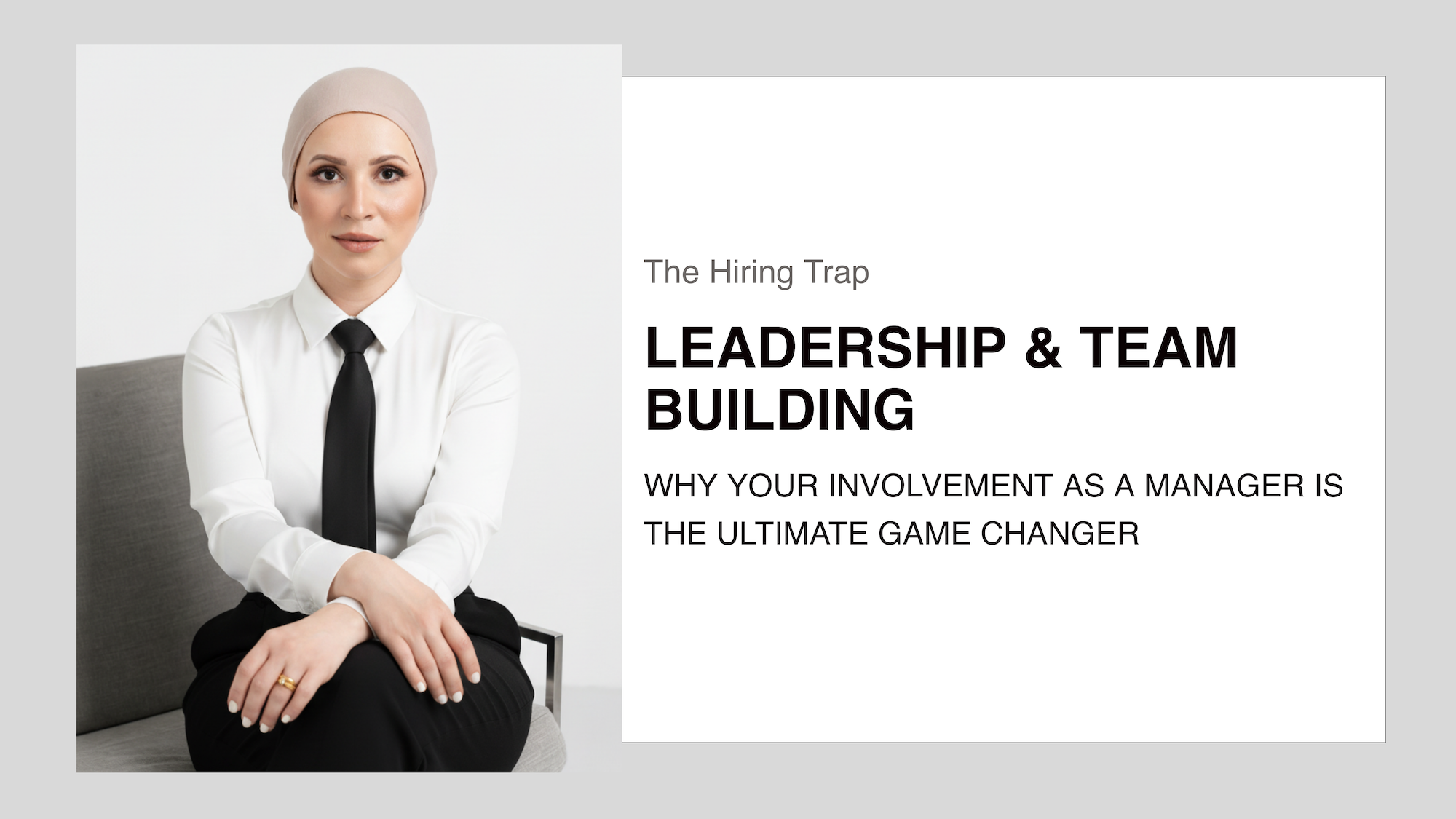The Hiring Trap: Why Your Involvement as a Manager is the Ultimate Game Changer

Many managers operate under a common misconception: they aren't really expected to be deeply involved in the hiring process. It is often assumed that HR can handle it—from the job description to the final offer.
But relying solely on the traditional way of doing things usually means missing one key ingredient: You.
It is time for a mindset shift. When managers step into the hiring process with confidence, the result is intentional, aligned, and instrumental in building the high-performing team you actually need.
Here is how you can step into the hiring process without taking on more than you should, and why your involvement is the difference between filling a role and finding the right fit.
1. Shift from the "Job Description" to "Persona Definition”
When a position opens up, the knee-jerk reaction is to ask HR for a job description. HR will typically do one of three things: pull an old template from the archives, research competitors, or—more recently—ask AI to write one.
While these tools are useful, they cannot capture the nuance of your specific team environment. They cannot see the individual you envision working beside you every day.
The Manager’s Role:
Before a single word of the job description is written, you need to define the persona of the ideal hire. Don't just list tasks; describe the human being.
Ask yourself:
- What qualities and traits make them a great fit?
- What values matter most to our current team dynamic?
- If I imagine this person is already hired and doing a brilliant job, who are they?
When you provide HR with this vivid persona—focusing on who the candidate is, not just what they do—you ensure the search starts on the right track.
2. Own the Interview (The Chemistry Check)
Once candidates are attracted, the interview is where things get real. This is the most critical part of the process, and you cannot outsource it.
HR can screen for qualifications, education, and technical skills. But only you—the manager—know the unique heartbeat of your team. You are the only one who can determine if a candidate will click with your team on a personal level.
The Manager’s Role:
During the interview, you are assessing more than technical ability. You are assessing cultural fit and adaptability.
- Can you communicate openly with them?
- Do they understand your expectations?
- Do they have the right attitude and mindset to thrive in your specific environment?
The Cost of Disengagement:
Hiring the wrong person is expensive—not just in salary, but in wasted training, lost productivity, and the inevitable cost of re-hiring. By being hands-on in the interview, you minimize turnover and invest in long-term success.
3. Onboarding: The Foundation of Trust
You’ve hired the right person. Now, what’s next? Too often, managers hand the new hire back to HR for onboarding and training. This is a missed opportunity.
Onboarding is your chance to build rapport, establish trust, and set the tone for accountability.
The Manager’s Role:
Be hands-on from Day 1. Check on them every few hours. Take them to lunch. create an open-door environment where they feel safe asking questions or voicing concerns.
When you are involved in their training, two things happen:
- Confidence: The employee feels supported and encouraged to communicate freely.
- Accountability: The employee understands that you are invested in their success, which motivates them to take ownership of their role.
The Bottom Line
Your involvement in the hiring process is not just "important"—it is essential.
You are the guardian of your team’s culture. No one else understands your goals, your values, and your communication style the way you do. By shaping the process from the persona definition to the final onboarding steps, you aren’t just filling a seat. You are building a team that works together seamlessly.
Don't wait for the perfect team to happen. Shape the process.
Looking to build a stronger, more aligned team? Explore more insights at Aligned Teamwork.




